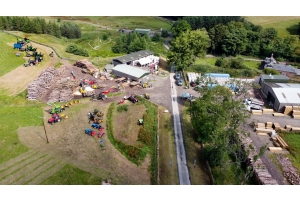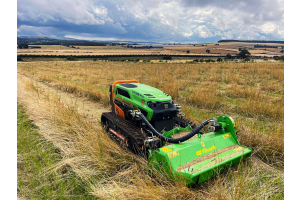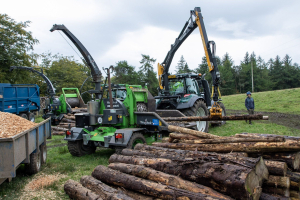This is a demo store. No orders will be fulfilled.
Some Interesting Tree Protection

On a recent trip North I came across a couple of totally different examples of tree protection, both of which got me thinking.
Both forms of protection were found on mature trees, although only one was meant for mature trees, and one was to protect from the local wildlife while the other was to protect from the local foresters!
The first example was a line of roadside Beeches which had been carefully protected with large metal tree guards, a sensible decision given the number of deer around. Unfortunately once the trees had grown up the guards had never been removed so the trees had simply started to grow through and around them, as can be seen in the picture. I question now whether the metalwork could be removed and feel for the person who ends up trying to fell these trees or cut them up. These metal guards, matched with larger transplanted trees, can be incredibly effective, giving instand presence when landscaping but it does highlight that often with more expensive protection you also have to pay more attention to the ongoing managment of that protection.
The second example was a forest of large Douglas Fir owned by the Forestry Commission. Anna had noticed a bit on the information sign saying that the trees were all protected. After stating that it was a ridiculous suggestion that every tree in a forest could be protected and that she must have read it wrong we started to notice that every tree had a small stake at its base with a number on it. Whether these individual numbers were for TPO's (tree preservation orders) or the like or whether the stand was being monitered for research or as a seed source I do not know. However, it was great to see these magnificent trees being looked after in a time and area where there is a focus on reducing "exotic" species in preference of native trees.
Just a couple of thoughts in a time when the protection of young trees is becoming increasingly important due to greater pressure from wildlife and woodland management appears to be guided by so many things rather than just producing high quality, large timber...
Fortunately, if you are thinking of planting trees and using some form of protection the options are improving all the time. Biodegradable materials now mean that there is no need to go back to remove tree shelters, with the technology now being so good that you can even choose the length of time your shelters take to degrade! All this leads to reduced labour, less damage to growing trees, less waste and tidier woodlands.
These advanced tree shelters matched to Treeline's home made tree stakes, which are made of Larch to remove the need for chemical treatment, are a great, environmentally friendly combination to give your trees the perfect start in life.
The remains of a metal tree shelter partially grown into one of the large roadside Beech trees
One of the large Douglas Fir with its individual number on a stake at its base
Our preferred method of tree protection - a biodegradable shelter supported by one of our own Larch tree stakes








